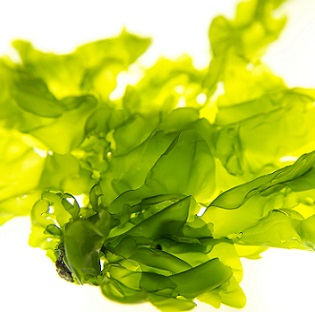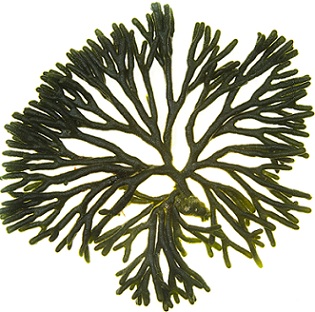IT’S often smelly, slimy and gets in the way of a nice walk on the beach – and being called a weed doesn’t help – but the true colours of the maligned seaweed have been revealed through Deakin University photography.
The beautiful images will be on display as part of a photographic exhibition during the Australian Marine Sciences Association annual conference, hosted by Deakin University at its Waterfront campus this week.
The exhibition, which includes multiple species of seaweed, is part of the conference’s aim to engage the community with the physical world through science.
The photographic exhibition will be available all week, including on the evening before the public forum begins. The photographs are the work of seaweed expert Dr Alecia Bellgrove, fellow researcher Melanie Wells and Deakin University photographer Donna Squire.
Also on display will be jewellery, crafted by Warrnambool jewellery artist Olivia Morgan, using the seaweed photographs as a template to create necklaces, earrings and brooches.
Dr Bellgrove said the photography and jewellery were designed to help bring science to the community in a medium that people could easily connect with.
“We all generally associate seaweed with the smells and sights of our beaches and while many people understand it is a really important part of our environment, not everyone is aware of just how complex it is, and why we need it so much,” Dr Bellgrove said.
“Photography is a great way of showing people the many different species of seaweed we have in our ecosystem and explaining what they do.”
Dr Bellgrove, who has been researching seaweed for 23 years, said it played a vital role in many parts of our ecosystem, from producing the oxygen we breathe through to creating habitat and providing biodiversity.
“I am really excited about this year’s conference, because for the first time it will include a public forum, which will give people the opportunity to come along and ask experts in the field of marine science questions about the world around us, which is changing all the time,” she said.
Dr Bellgrove will also present some of her research on seaweed at the conference, including the effects human sewage effluent disposal is having on seaweed, and in turn on biodiversity.
Dr Bellgrove said ocean discharge of treated sewage effluent had caused the localised disappearance of an entire species of seaweed, Neptune’s Necklace (Hormosira banksii), within just 12 months after a wastewater outfall was commissioned near Gunnamatta in the late 1970s.
“This had flow on effects across the entire rocky-shore community within the area, with loss of species richness and a switch to a less complex and ephemeral community,” she said.
“While Melbourne Water has made significant wastewater treatment upgrades in recent years, understanding the biological and ecological limitations to the recovery of habitat-forming seaweeds like Neptune’s Necklace is critical to effective restoration of previously disturbed rocky-shore communities.
“Our research has been trying to fill these knowledge gaps to better inform management practices.”
Dr Bellgrove said ocean discharge of sewage wastewater was common practice in many parts of the world, and the impacts on habitat-forming seaweeds and associated biodiversity were often similar to those observed locally for Neptune’s Necklace.
“So it’s quite likely that our research findings will apply far beyond southern Australian shores. Biodiversity is the cornerstone of healthy functioning communities, facilitating a range of ecosystem services from nutrient and carbon storage and cycling to ecosystem resilience in a changing world.
“In coastal marine systems, seaweeds are often the foundation of communities, creating habitat and changing the environment for other species.
“Understanding how our actions as humans can affect seaweeds can help us to better manage our coastal marine environments for the health of the systems and the enjoyment of generations to come.”
The Australian Marine Sciences Association conference is on at Deakin University’s Waterfront Campus until Thursday.









